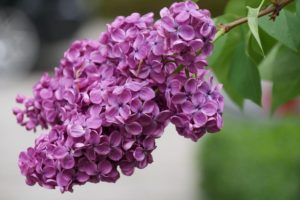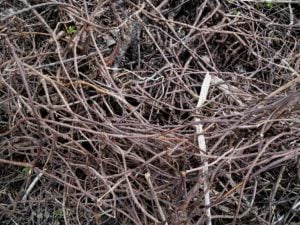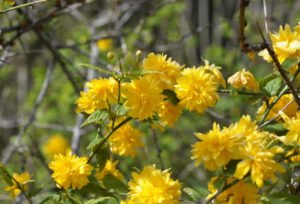
I advise lovers of beauty and a healthy lifestyle to pay attention to chestnut. Chestnut is a wonderful decorator of our gardens and a great healer for our souls and bodies. Why do I say that? Yes, because direct contact with a chestnut can well energize you for the whole day, and its fruits are extremely useful for health. Delicious nuts of edible chestnut species are used to prepare a variety of dishes, and inedible horse chestnut fruits have been used in folk medicine since ancient times.
The height of the chestnut varies from 1 to 35 m (3.3-115 ft), depending on the type and variety. It blooms very beautifully: its pyramidal inflorescences will decorate your garden from the end of May to the middle of July.
Chestnut fruits are enclosed in cozy shells protected by thorns. During the ripening period, the shells open and give us delicious fruits. Each shell contains from 1 to 3 nuts.

Chestnuts are bright individualists. No matter how hard you try, nothing will grow under them, because the chestnut creates a very thick shadow, and its powerful surface roots do not allow other crops to develop successfully. But it is easy to turn this disadvantage into a virtue. You can install garden benches under the chestnut tree, where on hot summer days it will be nice to hide from the scorching sun rays.
Planting chestnut
When planting a chestnut tree, keep in mind that a space of at least 3 m (9.8 ft) in diameter (or even more) should be allocated for each seedling. Only in this case, an adult tree will please you with a spreading crown, abundant flowering and good fruiting. Chestnut prefers loamy leached soil. It is resistant to wind, air pollution and is quite hardy.
Planting chestnut seedlings
It is most convenient to plant a chestnut with 1-2-year-old seedlings. To do this, prepare square holes with a size of 50x50x50 cm (1.6×1.6×1.6 ft).Mix the earth taken out of the pits with humus and sand in the ratio: 2:1:1 and add 0.5 kg (17.6 oz) of dolomite flour and slaked lime; pour 200 g (7 oz) of nitrogen-phosphorus-potassium fertilizer into each well. At the bottom of the hole, lay a drainage layer (gravel or crushed stone mixed with sand) 10-15 cm (3.9-5.9 in) high. Then lightly sprinkle the drainage layer with a soil substrate, carefully fill the hole with water, place the seedling and carefully fill the hole with soil, lightly tamping it with your hands.
The landing hill is raised 15-20 cm (5.9-7.9 in) above the soil level, since it is necessary to take into account the subsidence of the soil. When planting large chestnut trees, place the root neck of the seedling 8-10 cm (3.1-3.9 in) above the level of the planting mound. Seedlings of low and medium chestnut varieties should not be overstated. Attach the seedlings to the support to avoid damage in strong winds. After planting, you need to water the plant abundantly with warm water.
Planting chestnut seeds in the fall
Chestnut seeds (nuts) germinate perfectly in the open ground even without our intervention, so planting chestnut seeds will not be difficult. To do this, collect the fallen nuts in autumn and carry out the stratification procedure (exposure in the cold). To do this, put the chestnuts in an open box, sprinkle with sand and put them in the refrigerator or in the basement for 10-12 days. Optimal temperature for stratification: +5-6 °C (41-42.8°F). then you can plant the seeds in the open ground.
Pre-prepare and pour the grooves well in the place where the planting of chestnuts was planned, and bury them 5-6 cm (2-2.4 in).Place the seeds in the recesses-nuts at a distance of 10-15 cm (3.9-5.9 in) from each other, then cover them with fallen leaves (it is not necessary to bury them). All chestnut seeds are ready for winter, and in the spring you will see green shoots, then you will only have to thin out the seedlings, leaving the strongest plants.
Planting chestnut seeds in spring
Fallen fruits in autumn should be covered with sand and stored all winter at a temperature of + 5-6 °C (41-42.8°F), and before spring planting in the open ground for 5 days, put them in warm water, then the fruit shell will swell, and an embryo will form inside. Then plant chestnut seeds in your favorite place in the country. With this cultivation, annual chestnuts will grow up to 20-25 cm (7.9-9.8 in) in a year, and at the age of five they will grow up to 3 m (9.8 ft) in height.

Chestnut care
2-3 times a season, the ground around the chestnut tree needs to be loosened and the plant dug out, and there is also no need to remove fallen autumn leaves. 10-12 cm (3.9-4.7 in) of mulch, peat or sawdust are poured in a circle. But if you want to see your chestnuts have lush trees with a spreading crown, in early spring, make a shortening when pruning a younger tree: trim the high branches at the top by ¼ of the length.
Fertilizer is required to be applied in early spring. To do this, dilute ammonium nitrate in a 15-liter bucket – 20 g (0.7 oz), mullein (fresh manure) – 1 kg (2.2 lb), 20 g (0.7 oz) of nitrogen-phosphorus-potassium fertilizer and 15 g (0.5 oz) of urea.
Types of sweet chestnut
There are slightly more than 30 species of chestnut trees and shrubs in nature. There are several types of chestnut trees, the fruits of which are eaten.
Castanea sativa
Castanea sativa is a noble slender tree up to 35 m (115 ft) tall with a regular egg-shaped crown. The leaves are large lanceolate, 25-30 cm (9.8-11.8 in) long. Inflorescences are lush, light yellow. The nuts are large, edible, enclosed in a round fluffy cocoon. Chestnut is long-lived, under favorable conditions it is able to live in one place for up to 500 years, and in natural conditions – even longer.

Castanea mollissima
Castanea mollissima is a beautiful tree up to 15 m (49.2 ft) tall, with spreading branches and finely toothed leaves that have whitish pubescence from below. Fluffy horizontally standing inflorescences come in a variety of colors, depending on the variety. Chinese chestnut nuts are famous for their unsurpassed taste and are widely used in food.

Castanea crenata
Originally from Japan, China and Korea. It grows quickly and begins to bear fruit early – 2-4 years after planting. The fruits are the largest among edible chestnuts, up to 6 cm in diameter and up to 80 g (2.8 oz) in weight. In Japan, more than 100 varieties with delicious and large nuts have been bred.





Leave a Reply